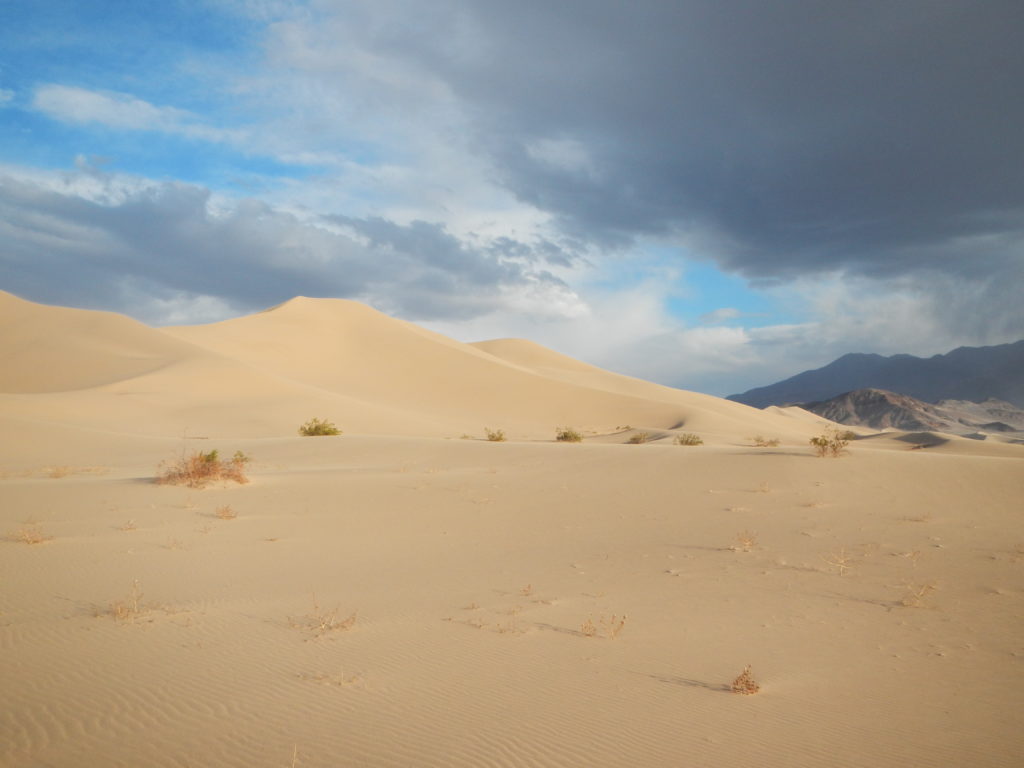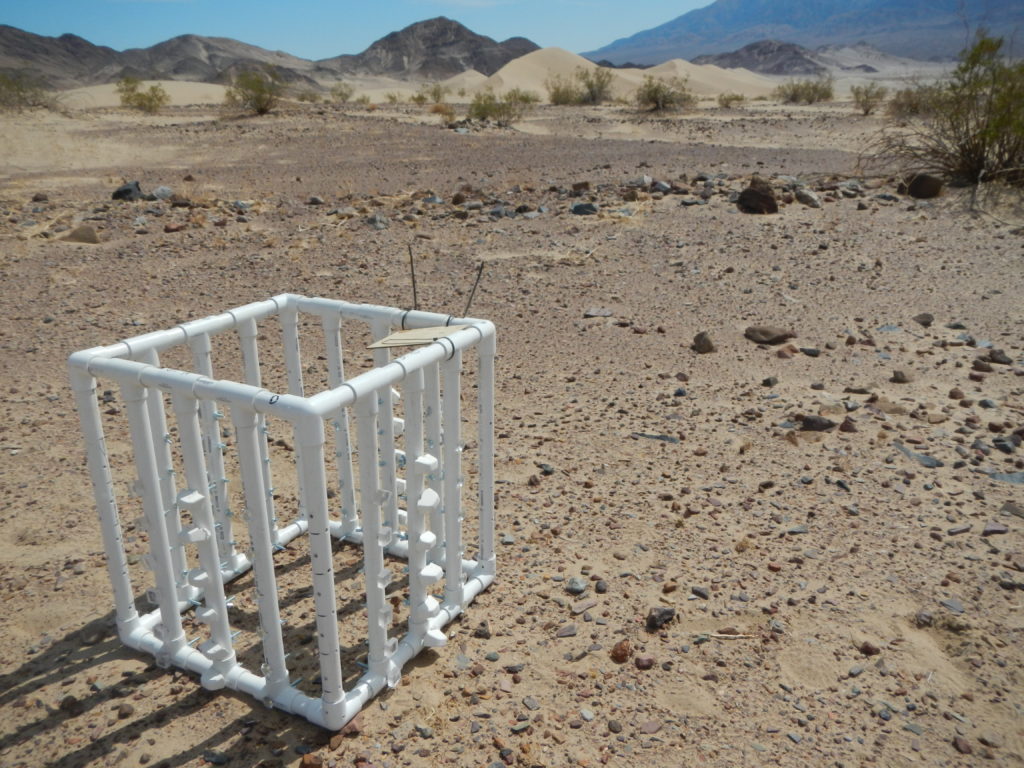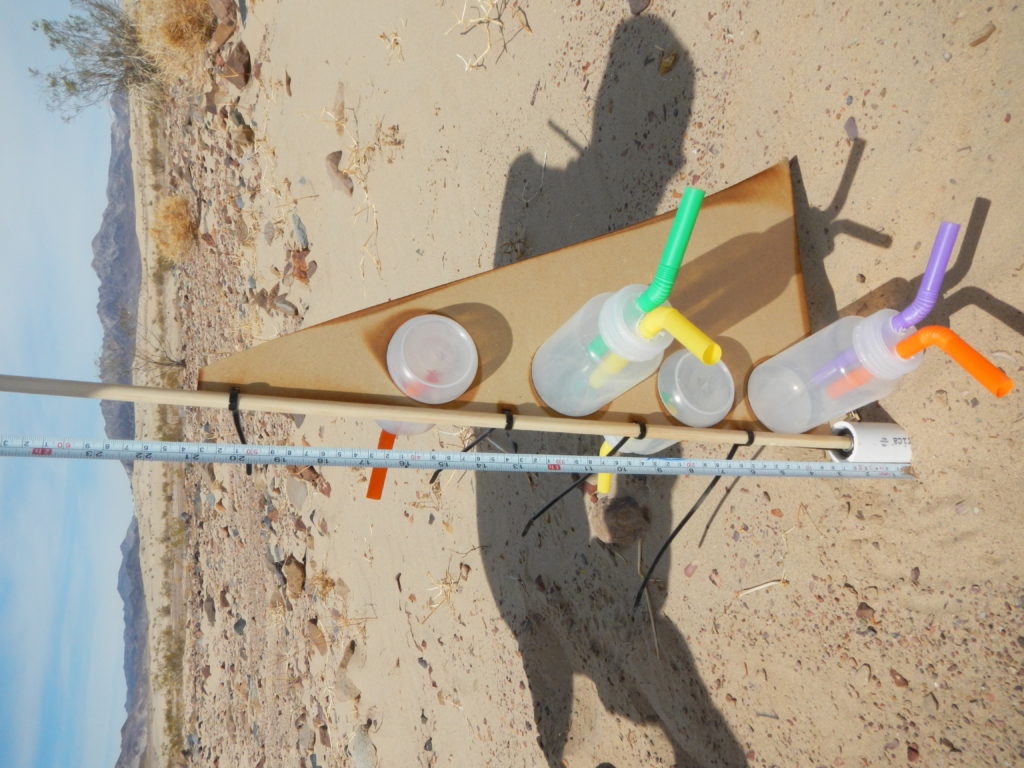Ibex Dunes Research
Welcome to the GALE Lab web page showing you all the fun details about our ongoing research on the Ibex dune field in Death Valley National Park.
Been to Ibex? Send us your photos here!

What are we doing at Ibex Dunes?
Well, as you’ve probably noticed hiking around the dune fields, it’s windy…VERY windy. The high wind speeds along with a bunch of sand nearby makes it a perfect location to study wind abrasion. Wind abrasion is the process of wearing down a solid object (like a rock) due to the impact of particles (like sand) carried by the wind. Previous researchers have looked at abrasion caused by wind but have yet to consider how erosion of a particular material changes over distance. We have equipment placed all over Ibex to specifically study this gap in our knowledge on how wind-blown erosion changes with distance and how abrasion varies with different materials. Understanding this process will facilitate better-informed placement of facilities and equipment in arid regions, and provide an expected rate of degradation that could be used in planning and risk management.
How are we answering these questions?
We are answering our questions using three pieces of equipment. 1. First is what we call “abrasion cubes”. These cubes, constructed with PVC, each have four sides with 5 vertical bars that have different material on each. These cubes placed all around Ibex allow us to study how abrasion varies on different material, different heights, and different distances from the dune field. 2. We also have sediment traps placed next to our abrasion cubes. These sediment traps will let us determine how much and what size sediment is transported at Ibex. 3. Lastly, we have two weather stations that provide us with wind speed, wind direction, and many other necessary measurements.


What can you do to help?
First of all, we love hearing from those who stumble across our work in the wild. Tell us what you think about the study. What are your observations while hiking around Ibex dunes? Also, please do not touch or move any of the equipment. Our study depends on all of our equipment being in the same location over 1 year. Click this link to head to a Google Form page to fill out a brief survey and send your photos: https://forms.gle/9XpPWVBFJToLgDDU7
If you have any questions please email planetarytaylor@g.ucla.edu


